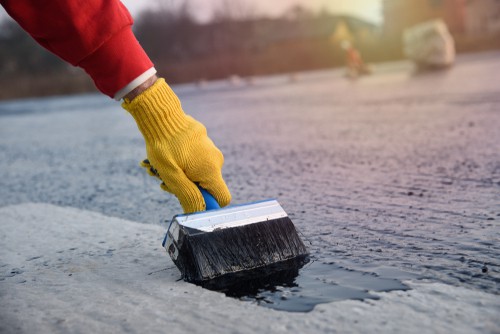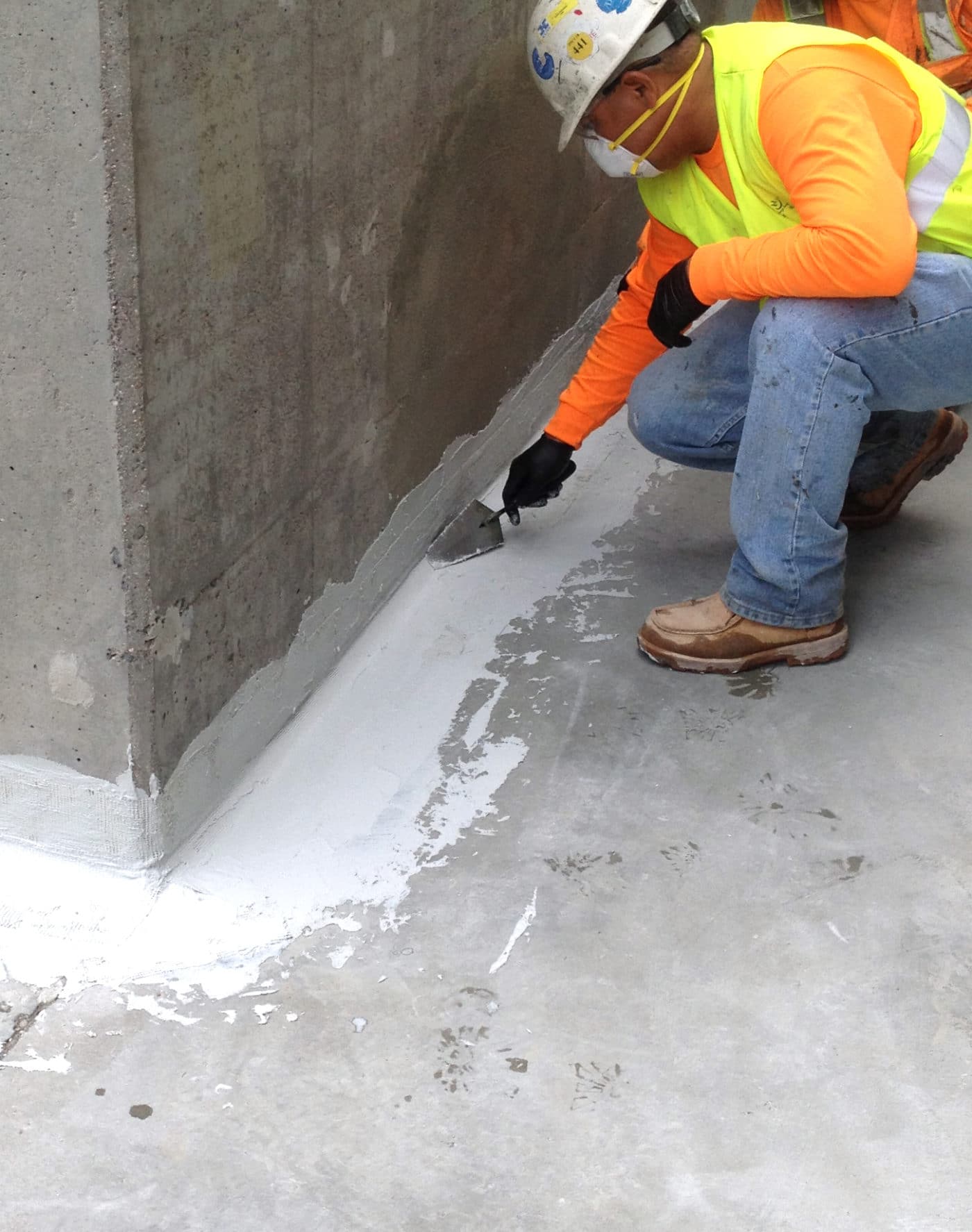Choosing the Right Drainage & waterproofing company Omaha: Red Flags and Green Lights
Wiki Article
Sorts of Waterproofing: Checking Out the Various Techniques and Their Applications
Waterproofing is an important aspect of construction and maintenance. It shields frameworks from the harmful effects of water damage. There are several methods readily available, each with its distinct applications and advantages. From membrane layer systems to cementitious remedies, recognizing these options is essential for effective implementation. The option of waterproofing technique can greatly impact longevity and durability. Discovering these numerous techniques discloses their distinct advantages and possible challenges, motivating more consideration of excellent solutions.Membrane Waterproofing Equipments
Membrane waterproofing systems act as a crucial obstacle versus water breach in various structures. These systems typically are composed of slim sheets made from materials like rubber, polycarbonate, or asphalt, which are put on surfaces to stop wetness penetration. They can be mounted over or below grade and are especially efficient in areas vulnerable to high water exposure, such as cellars, roofings, and foundations.The installment procedure includes cleansing the substratum, using adhesives or guides, and specifically suitable the membrane to ensure full insurance coverage. Membrane systems can be either totally stuck, mechanically affixed, or laid loose, depending upon the particular requirements of the project. They use toughness and flexibility, fitting architectural movements without endangering their waterproofing capacities. These systems can be enhanced with extra layers for enhanced protection. Inevitably, membrane layer waterproofing systems are important for guarding structures against water damage and maintaining long-lasting stability.Liquid-Applied Waterproofing Coatings
Liquid-applied waterproofing finishes give a versatile option for shielding surfaces from water seepage - French drain installation Omaha. These coverings contain fluid products that, when applied, form a smooth, adaptable membrane layer. Their versatility enables application on numerous substratums, including concrete, metal, and timber. The finishes can be used in diverse environments, from household to industrial setups, making them ideal for roofs, structures, and below-grade structures.One significant advantage of liquid-applied layers is their ability to comply with uneven shapes and penetrate fractures, producing a durable obstacle versus wetness. They typically display exceptional bond residential properties and resistance to UV radiation, making sure long life and toughness. Furthermore, the application process is typically uncomplicated, enabling quick installation and reduced labor costs. This approach also decreases the risk of water merging, as the continual layer properly guides water away from vulnerable areas. In general, liquid-applied waterproofing finishings are an effective choice for thorough water protectionCementitious Waterproofing Solutions

Cementitious waterproofing services use a durable option for structures needing dependable dampness defense. These systems mostly make use of a mix of concrete, sand, and chemical ingredients to produce a waterproof obstacle. They are typically used to surface areas such as concrete walls, structures, and floorings, providing a long lasting, lasting protection versus water intrusion.One of the crucial benefits of cementitious waterproofing is its simplicity of application; it can be applied utilizing a brush, roller, or spray, making it suitable for numerous task dimensions. Furthermore, this method is compatible with lots of surface areas and can frequently be used in combination with various other waterproofing techniques.Cementitious options are specifically efficient in environments where water direct exposure is an issue, such as basements or below-grade structures. Their superb adhesion residential properties guarantee that they bond well with substrates, giving a solid and impenetrable layer versus wetness penetration.
Bentonite Waterproofing
Bentonite waterproofing is a highly reliable technique that utilizes salt bentonite clay to produce an all-natural obstacle against water. This strategy makes use of the distinct buildings of bentonite, which expands upon contact with water, securing any kind of prospective leakages and preventing dampness seepage. It is frequently made use of in numerous applications, including structure wall surfaces, tunnels, and maintaining walls, where water resistance is essential.Bentonite can be applied in numerous types, such as panels or coverings, giving versatility in setup. Its capacity to self-seal makes it an attractive option for locations subject to changing soil or rising and falling water degrees. In addition, bentonite waterproofing is environmentally friendly, as it is a natural material that does not present hazardous chemicals right into the surroundings.Drain and External Waterproofing Equipments
Efficient waterproofing commonly includes a combination of techniques, consisting of drainage and external systems. Water drainage systems, such as French drains pipes and sump pumps, are developed to redirect water away from structures, lowering hydrostatic stress against structures. These systems are crucial in avoiding water accumulation click resources that can result in architectural damage and mold growth.External waterproofing, on the other hand, includes applying safety barriers to the building's outside. Techniques such as the installment of waterproof membrane layers, finishings, or sealants can help avoid water infiltration. This technique not only secures the structure however additionally enhances the general toughness of the structure.Together, drainage and external waterproofing systems form a thorough option to take care of water More Bonuses effectively. By carrying out these methods, property proprietors can guard their investments against the destructive impacts of dampness, ensuring long-lasting security and safety for their buildings.Frequently Asked Inquiries
How Do I Choose the Right Waterproofing Technique for My Job?
Choosing the ideal waterproofing approach depends on factors such as job type, environmental problems, spending plan, and preferred longevity. Assessing these facets permits notified decisions tailored to details demands and needs.
Can Waterproofing Be Applied in Cold Weather Conditions?
Waterproofing can be used in winter conditions, yet it calls for specific products and strategies. Cold temperatures might influence treating times and attachment, demanding cautious option of products created for low-temperature application.
What Are the Common Indicators of Waterproofing Failing?
Common indicators of waterproofing failing include noticeable water spots, peeling off paint, moist smells, mold and mildew development, and official source fractures in walls or foundations. French drain installation Omaha. These indications suggest that wetness is penetrating the obstacle, endangering its efficiencyFor How Long Does Waterproofing Last Prior To Requiring Upkeep?
The long life of waterproofing varies, usually lasting in between 5 to ten years. Variables such as material high quality, ecological conditions, and maintenance methods influence its resilience, demanding periodic examinations to assure effective protection against water intrusion.Exist Eco-Friendly Waterproofing Options Available?
The question of eco-friendly waterproofing alternatives discloses a growing interest in lasting materials (Yard drainage Omaha). Numerous all-natural materials, such as plant-based sealants and recycled products, use efficient solutions while reducing ecological impact, interesting ecologically mindful consumersReport this wiki page